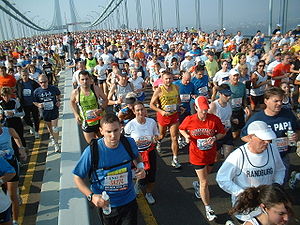My Trip to South Africa- A week in Cape Town, and a week in Johannesburg – December 2009
Its been 10 years since I’ve done this familiar ritual in anticipation of my seventeen hour flight to South Africa. Packing and repacking, butterflies multiplying in my stomach, consistently reaching to ensure the sleep-induced hormone (melatonin) is still uncrushed in my pocket (yeah, it’s a long flight), first in line at the Delta Airlines International check in desk – three plus hours early, anxiously awaiting to board the gateway to my personal Paradise, “home”.
Besides South Africa being a gem to behold, travelling to city you grew up in as a child has a unique set of characteristics. There is a certain confidence of knowing your way around, yet simultaneously a daunting unfamiliarity. Besides activating the windscreen wipers instead of the indicators while driving, I seem to recognize what I am seeing but also realizing nothing is in focus. Emotions from both extremes of a continuum pump through my veins. Like Bill Bryson in his book “I’m a stranger here myself”, I had to orient myself to things which should have been familiar. It is disconcerting to find yourself so simultaneously in your element and yet out of it. My coping mechanism for driving on the “wrong” side of the road is is a chant… oh yeah, I chant to myself “passenger on pavement, passenger on pavement”. Huh? No, its not meditation, an ancient yoga ritual or anything like that, – in avoidance of a head on collision, I developed this chant to ensure that as I turn a corner, the car lands up on the right side of the road, I mean “left” which in South Africa “left” is right, and the passenger side of the car should be closer to the pavement. It just dawned on me, in South Africa the pavement is the sidewalk, but in the US the pavement is the road, so now I am really confuzzled. Well, you know what I mean… “Driver in the middle, Driver in the middle”
My first week, I spent in Cape Town. I like to call it Africa’s Mother city, because Africa itself is the Mother continent (well at least that is so, in my biased opinion). Cape Town has such simple yet majestic beauty and is so rich in culture. The beaches of this stunning coastal region are almost as white as snow. Coming from Winter, I was anxious to catch up with the other South Africans in the tanning department, yet there was so much beauty to take in, I was thankful I have that natural olive skin and kind of blended in. These silken shores are surrounded by magnificent cliffs and I made a point to drive along the mountain roads at every opportunity. At times I even envied the many cyclists out there training on the epitome of hill repeats. Chapman’s peak is easily the eighth wander of the world, whether you are riding it on a bike, driving it in a car, or tempting its rebellious twists and turns from a motorcycle.

Table Mountain is also one of the main attractions in Cape Town and I chose a gorgeous clear day to experience the rotating cable car to the top. All my tanning goals were accounted for in the few hours I spent on that mountain. Its almost a kilometer high off the ground, flat as a pancake on top, with a view to die for. This mountain, is so named because of its flat surface which amazingly attracts clouds to cover it more than oven has a unique tablecloth.

Some other highlights included a drive along the coast line to Cape Point, the southern most tip of Africa, the place where Indian meets Atlantic. Along the way to this magnificent spot on earth, I stopped at the most memorable beach of all – Boulders. Memorable because it is a colony of African penguins. “Oohing” and “ahhing” over such cute creatures for endless hours seemed so natural, as every human with in hearing distance was doing just that. How cool it is to share a beach with penguins.

I could go on forever about the magnificence of Cape Town. But I’ll wrap that up with the old cliché of a picture is worth a thousand words. I do have to add that each morning before 6am, I would go for a run along the seapoint waterfront, up to Clifton beaches and took a few of these pictures along the way.


To my tri club, Master’s Swimmers – How is this for a Masters Swim club you guys? This was taken at 6:30 am in the morning – compare this to our swim training in the pitch dark, at the same time in frozen over Atlanta.



After the memorable week in the most beautiful city in the world, I was excited to head to Joeys (Johannesburg) to visit with friends and family. Having caught up with some old friends on face book, there were many to see, places to go, things to do.
Johannesburg was more about family and friends, so again, pictures tell the story better than words. My highlight was driving up and down the streets of the neighbourhood I grew up in, checking out our old house, which has not changed at all (besides all these alarm company signs up on the outside wall)…

Not having enough time in the country, I did not get to go to a game reserve, so I settled for the Lion park to get my big Cat fix. The lions were posing for me that day and I nearly managed to steal a cub.

Pretty cute and cuddly at that size, but remembering they grow up and prefer to be in the wild. I won’t get in the way of those wishes, so I watched Simba jump out my arms with my heart strings still attached to his front paws.


I guess this being a blog on my NUTRITION website, I should take the opportunity to mention some typical struggles with food and what new year beginning could provide as a motivator in itself. The most difficult challenge is one is typically not in control of the food on offer. While travelling through Cape Town with my Mom, it was almost impossible to pass up the fabulous Cape Malay cuisine. Probably due to it’s location, Cape Town offers up the freshest seafood around, but South Africans are real carnivores, which means my diet was much heavier than normal. Furthermore, the tropical fruit, and it being very much the season for it, is phenomenal. Dried fruit, something I would never even consider as part of my normal diet, was irresistible. Experiencing the tempting pleasure of junk food, out of my regular routine, and limited access to usual gym equipment… (Sound familiar?)… my one saving grace is that the sun rises before 6am during South African Summers so getting in an early run, made up for some of these challenges.
My main coping mechanism was portion control. I didn’t pass up local specialties or treats friends and family had prepared for me. I kept my ultimate goal firmly in the forefront of my mind, took small bites and savoured each one. Keeping my goals in focus always aids in continuously being inspired by them. On the longgggg…. plane ride back to Atlanta, I had plenty of opportunity to make grand plans for 2010. I always stress to practice what I preach, so while I relaxed and enjoyed my holiday, I was able to get right back into my own program, and of course feel terrific about it. I guiltlessly took a break and being right back into my normal routine, my philosophy of living a lifestyle, rather than being on a “diet” lives on!!!
What about you? How was your Holiday season? What are some of your challenges? Where do you stand today relative to goals set? Goals set…. Goals met? Whether you may be celebrating a success or wondering what the heck happened, feel free to leave me a comment. Savour your accomplishments, set progressive goals, and have a healthy year.







